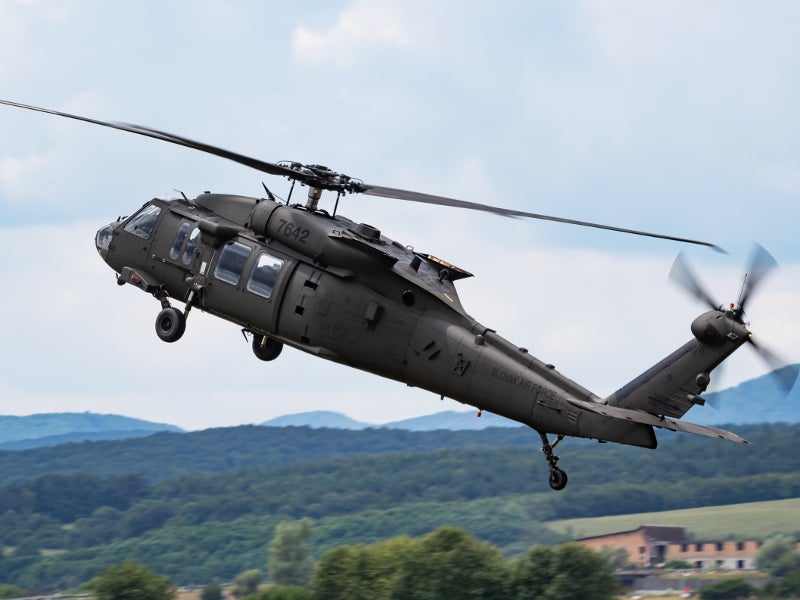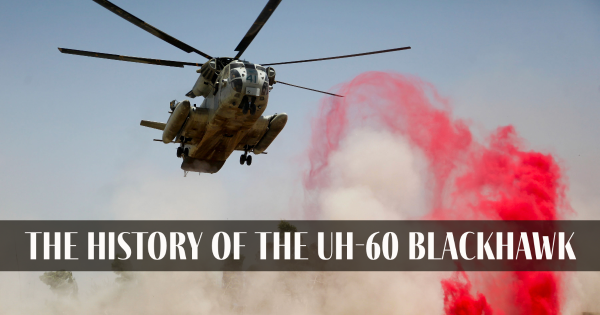Safety First: Important Action In UH 60 Helicopter Upkeep
Wiki Article
Navigating Uh 60 Helicopter Regulations and Compliance Requirements

Regulatory Structure Review
The governing structure regulating UH-60 helicopter operations incorporates a facility collection of policies and criteria developed by aeronautics authorities. These guidelines are developed to ensure the safe and reliable procedure of UH-60 helicopters in numerous atmospheres. The Federal Aviation Management (FAA) plays a central role in developing and implementing these policies, which cover a vast array of operational facets, consisting of airworthiness standards, pilot credentials, maintenance requirements, and functional procedures.Conformity with these policies is important for helicopter drivers to preserve the highest degree of safety and functional integrity. Failing to follow these laws can result in significant repercussions, consisting of mishaps, injuries, and regulatory permissions. Therefore, helicopter drivers must stay educated regarding the most up to date regulative developments and make sure that their procedures are in complete compliance with all suitable rules and criteria.
Airworthiness Instructions and Inspections
Among the regulatory framework governing UH-60 helicopter operations, an important emphasis exists on conformity with Airworthiness Directives and performing comprehensive evaluations to maintain security requirements and functional dependability. Airworthiness Regulations (ADs) are provided by air travel authorities to deal with risky problems in airplane, consisting of the UH-60 helicopter, and mandate particular actions to be taken by operators or proprietors. Compliance with ADs is mandatory, and failing to stick to these regulations can lead to serious consequences, consisting of grounding of the airplane.
Routine inspections are paramount to making certain the airworthiness of UH-60 helicopters. These examinations include a range of checks, from routine day-to-day assessments performed by pilots prior to and after trips to more comprehensive scheduled upkeep inspections carried out by accredited auto mechanics. In addition, special assessments may be called for based on details problems or occurrences. By sticking to a stringent inspection routine, operators can identify and attend to potential concerns quickly, therefore improving the safety and security and dependability of UH-60 helicopter procedures.
Pilot Qualifications and Training

Pilot look what i found training for UH-60 helicopters is detailed and covers a wide variety of topics, consisting of aircraft systems, emergency situation procedures, navigation, and mission-specific training. In addition, pilots go through simulator training to exercise different emergency circumstances in a controlled setting. This training assists pilots develop the needed skills to manage challenging scenarios efficiently.


In addition, recurring training and specialist growth are essential for UH-60 pilots to stay existing with the most recent policies, technology, and best practices. By investing in pilot credentials and training, drivers can boost safety, maximize efficiency, and make sure compliance with regulative requirements in the operation of UH-60 helicopters.
Functional Limitations and Demands
Pilot credentials and training offer as the foundation for understanding the operational restrictions and demands linked with UH-60 helicopter procedures. Additionally, compliance demands, such as sticking to details trip courses, communication protocols, and emergency procedures, are crucial for keeping functional safety and regulatory compliance. Pilots should stay present with all operational restrictions and demands with routine training, rundowns, and examines to alleviate threats and make certain reliable and secure UH-60 helicopter procedures.Emergency Situation Treatments and Compliance Testing
Efficient emergency situation procedures and thorough conformity testing are essential elements of maintaining functional safety and governing adherence in UH-60 helicopter operations. Normal compliance screening guarantees that the helicopter meets all governing requirements established forth by air travel authorities.In addition, conformity testing may include simulations of emergency situation circumstances to assess the team's action and the helicopter's efficiency under stress. By prioritizing emergency treatments and conformity screening, UH-60 drivers can minimize threats and demonstrate their dedication to security and governing compliance.
Conclusion
To conclude, adherence to regulatory structure, compliance with airworthiness instructions, pilot certifications and training, functional constraints, and emergency situation treatments are essential for navigating the regulations and requirements of operating a UH-60 helicopter. uh 60. It is crucial for operators look here to focus on safety and security and make certain complete conformity with all suitable guidelines to preserve the airworthiness and operational integrity of the aircraftBrowsing the governing landscape surrounding UH-60 helicopter procedures requires a read more nuanced understanding of the complex internet of guidelines and compliance requirements.Conformity with these guidelines is necessary for helicopter operators to maintain the highest possible degrees of security and operational honesty.Among the regulative framework controling UH-60 helicopter procedures, an important focus exists on conformity with Airworthiness Directives and conducting comprehensive inspections to promote security standards and functional dependability.Effective emergency situation procedures and detailed conformity testing are essential elements of maintaining functional safety and governing adherence in UH-60 helicopter operations. Normal compliance screening guarantees that the helicopter fulfills all regulative needs set forth by aeronautics authorities.
Report this wiki page